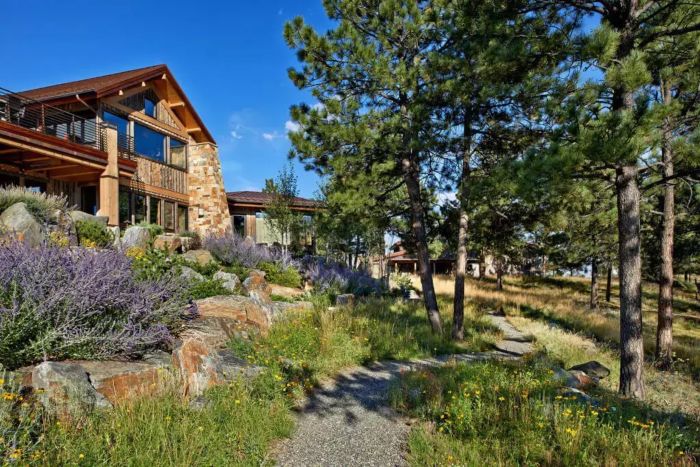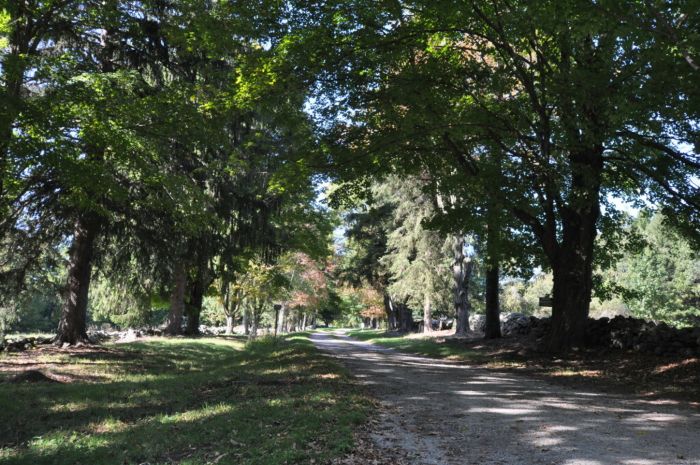Healthy trees are valuable additions to any property, providing shade, beauty, and a sense of tranquility. However, their impact goes beyond aesthetics. They can significantly affect the value of your property, especially when strategically planted. Whether you are planning to sell your home or simply want to enhance its appeal, you may be curious about how trees affect property value. Proper tree planting and transplanting can boost curb appeal, attract potential buyers, and increase the selling price of your property.
Do Trees Increase Property Value?
Yes, trees can significantly increase property value! Numerous studies have shown that properties with well-maintained trees sell for higher prices compared to those without. Trees provide several benefits that contribute to their positive impact on property value:
- Aesthetic Appeal: Trees, especially mature trees, enhance the visual appeal of a property, making it more attractive to potential buyers.
- Energy Savings: Strategically placed trees can provide shade during the summer and windbreaks during the winter, reducing energy costs.
- Environmental Benefits: Trees improve air quality by absorbing pollutants and releasing oxygen. They also help in reducing stormwater runoff and preventing soil erosion, contributing to a healthier environment.
- Privacy and Noise Reduction: Trees can act as natural barriers, providing privacy from neighbors and reducing noise from nearby roads.

Does Cutting Down Trees Ever Increase Property Value?
While trees generally increase property value, removing unhealthy or poorly placed trees can be beneficial.
- Hazardous Trees: Trees that are diseased, damaged, or at risk of falling pose safety hazards. Remove these trees to eliminate potential liabilities and make the property safer.
- Overcrowded or Poorly Placed Trees: Trees that are too close to the house, power lines, or each other can cause problems. Overcrowding can stunt growth, and trees close to structures can damage foundations or roofs.
- Improving Views: In some cases, trees may obstruct desirable views of the landscape or nearby scenery. Removing or trimming these trees can enhance the property’s appeal.
Where Should You Plant Trees to Save Money?
- South and West Sides: Planting deciduous trees on the south and west sides of your home can provide shade during the hot summer months, reducing cooling costs. In the winter, these trees lose their leaves, allowing sunlight to warm the house.
- Windbreaks: Planting evergreen trees on the north and northwest sides can act as windbreaks, reducing heating costs by blocking cold winter winds.
- Shade for Outdoor Areas: Providing shade for outdoor living spaces, such as patios or decks, can make these areas more comfortable and usable.
- Driveways and Walkways: Planting trees along driveways and walkways can provide shade and reduce the heat island effect.
What Kind of Trees Should You Plant?
Remember that trees are a long-term investment! Consider these factors when selecting trees to plant:
- Climate Adaptability: Choose trees that are well-suited to your local climate and soil conditions.
- Growth Rate and Size: Consider the mature size of the tree and how quickly it will grow. Fast-growing trees provide benefits sooner, but they may also have shorter lifespans and weaker wood. Check that the tree’s size is appropriate for the space available.
- Maintenance Needs: Some trees require more maintenance than others. Choose species that are relatively low-maintenance and resistant to pests and diseases.
- Aesthetic Appeal: Consider the tree’s appearance, including its shape, foliage color, and flowering habits.

Are There Trees You Should Never Plant?
While many trees can enhance property value, some species are best avoided due to potential drawbacks, such as:
- Invasiveness: Avoid planting trees that are known to be invasive in your area. These species can spread aggressively and outcompete native vegetation, causing ecological harm.
- High Maintenance: Some trees require extensive maintenance, such as frequent pruning or pest control. Examples include willows, which are prone to pests and diseases, and trees with messy fruit or seed pods.
- Weak Wood Trees: Trees with brittle or weak wood, such as sweet gums and Bradford pears, are more likely to suffer from storm damage, posing risks to property and people.
- Aggressive Root Systems: Trees with aggressive root systems, like certain species of cherries and willows, can damage foundations, sidewalks, and underground utilities.
And don’t plant these five tree species!
Here are a Few Trees To Boost Property Value
- Oak Trees: Oaks are strong, long-lived trees that provide excellent shade and have a majestic appearance. If you have a large area and need a tree as the focal point, oaks are good candidates.
- Maple Trees: Maples, especially sugar and red maples, are popular for their beautiful fall foliage. They grow relatively quickly and provide excellent shade.
- Dogwood Trees: Dogwoods are known for their stunning spring blossoms and attractive form. They are relatively small, making them suitable for a variety of landscape settings.
- Magnolia Trees: Magnolias are prized for their large, fragrant flowers and attractive foliage. They add a touch of elegance to any landscape and can be a focal point in garden design.
- Japanese Maple: These trees are renowned for their beautiful, delicate leaves and vibrant fall colors. They are smaller and more compact, making them perfect for ornamental use in gardens and landscapes.
Trees can significantly impact your property’s value, but the key lies in proper selection, placement, and maintenance. By choosing the right trees and taking good care of them, you can improve your property’s value and enjoy all the benefits trees have to offer!





